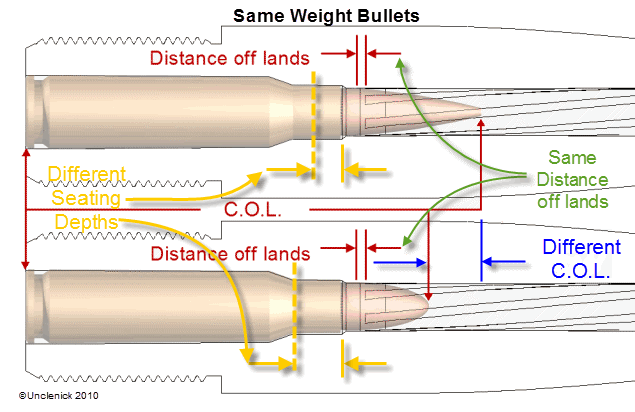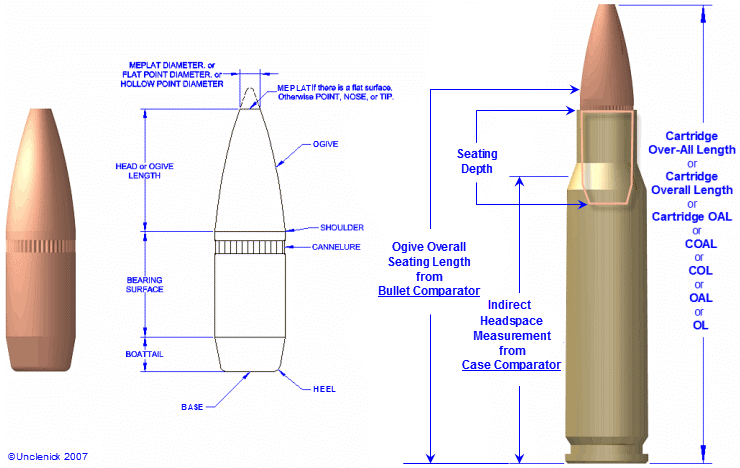hi again. So far in my loads I have ben using bullets with a crimp groove. Not paying attention to the over all length of the cartage, just seating the bullet to the middle of the crimp. Now that I have learned more, I see that oal is pretty important to accuracy. Setting the bullet back from the lands and such. Also I would like to load some 180 gr that don't have crimp grooves. I went out and got a oal gage and measured my chamber. I got different measurements with different projectiles, so I'm kind of confused.
180gr measured 2.992
168gr measured 2.923
150gr measured 2.898
The last batch of 150gr I loaded (they shoot well at 100-200yrds) measured at 2.740. The book says the col 2.780. Is col and oal same thing? Should I be seating closer to 2.800?
180gr measured 2.992
168gr measured 2.923
150gr measured 2.898
The last batch of 150gr I loaded (they shoot well at 100-200yrds) measured at 2.740. The book says the col 2.780. Is col and oal same thing? Should I be seating closer to 2.800?


